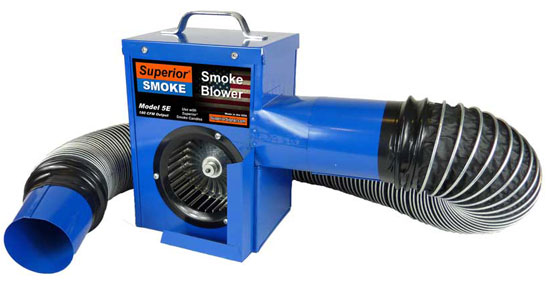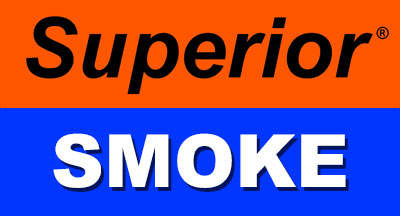What Stinks? Finding the source of odors can be easy if you know how
By Paul Tashian, Superior Signal Company LLC
Did you ever wish you had a dollar for every time a customer asked you about an annoying odor on their property? Well, you can get a lot more than a dollar if you know how to find the source of that odor quickly and professionally.
T he solution to this problem is smoke testing! Although there are hundreds of sewer and septic service professionals regularly performing smoke tests, it is surprising how many contractors have yet to discover this quick, inexpensive, and effective test.
he solution to this problem is smoke testing! Although there are hundreds of sewer and septic service professionals regularly performing smoke tests, it is surprising how many contractors have yet to discover this quick, inexpensive, and effective test.
The procedure consists of blowing smoke into the collection piping. The smoke mixed with air will travel throughout the system following the path of least resistance and quickly show up at leak sites.
What you will need…
(1) A blower (approx. 200cfm) to force the air/smoke mixture through the lines. Be sure to use a blower designed specifically for smoke testing. Alternative solutions with excessive pressure can blow air and smoke right past the plumbing traps and create a mess. They are also not suited to transmit smoke and the motors will not last long. We recommend the 5E Smoke Blower.
(2) Something to generate the smoke. A small 30-second or 60-second smoke candle is ideal for this application, and can be found at many heating/plumbing and municipal supply houses.
The Smoke Test…
Before performing a smoke test you should run water into all seldom used sinks, floor drains, etc., this will prevent smoke from passing (and may actually solve the original problem). Once these obvious odor sources have been checked, and you have decided to proceed with the smoke test, start by connecting the blower to the system. This can be done anywhere access is available, the cleanout or roof vent usually being the most convenient. Start the blower and begin introducing fresh air. It is not absolutely necessary to have the house line blocked off from the main or vents capped, but doing so will increase the efficiency of the test. Don’t block vents completely. Blocking them only partially allows the air/smoke mixture to flow better throughout the plumbing system.
O![]() nce the blower is started, place the smoke candle on the air intake side of the blower and begin introducing smoke into the line (Note: Never place the smoke candle itself into the pipe). You can now begin looking for leaks. It may be helpful to have an assistant aid you in your search. The amount of smoke found at any given leak site should be small, but easily visible. Smoke is relatively harmless, but like any foreign substance can be irritating to breathe. Keep windows open to ventilate the area.
nce the blower is started, place the smoke candle on the air intake side of the blower and begin introducing smoke into the line (Note: Never place the smoke candle itself into the pipe). You can now begin looking for leaks. It may be helpful to have an assistant aid you in your search. The amount of smoke found at any given leak site should be small, but easily visible. Smoke is relatively harmless, but like any foreign substance can be irritating to breathe. Keep windows open to ventilate the area.
Smoke testing is an excellent method for revealing poorly soldered or filled joints and defective seals, which may allow water damage or intrusion of noxious gases to leak indoors. The most common place you will find a leak is around a faulty toilet seal, but don’t be surprised if you find smoke where you least expect it. Smoke has been known to come up through the floor in areas where damaged pipes have caused cracks in concrete (an open passageway for smoke to follow). Leaks behind walls can sometimes be found by signs of smoke around light switches, electrical outlets, in attics or behind drop ceilings.
Smoke testing is a valuable service you can offer with little investment in time or money.

